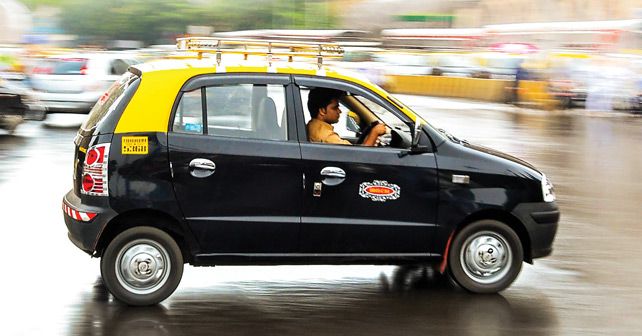
Road fatalities in Mumbai are down by 22% over the last four years. And while that’s a good start, there’s plenty more to be done. The key is knowing which areas to target.
A few months back, I had to get a police verification done to renew my passport. Among the formalities, the police were supposed to visit my residence to verify details. Two young, smart but burly cops landed at my place. While one was asking me questions and ticking on a sheet of paper, another pulled out a well-protected tab and proceeded to feed some information via the touchscreen and to take my mug shot. The tab was unexpected, but what was even more surprising was the dongly-modemy thingy that he fished out of his backpack to connect the tab to send my data to wherever such things are sent. Even the lousy cellular coverage at my place was not a deterrent and he had no issues whatsoever connecting to – what I hope – is a secure server.
Now imagine the traffic police in your town using a tab or mobile with pre-loaded software to enter data at the site where a road crash has taken place. The information can be sent in real-time so that immediate crash analysis can take place. Today, most of this is done manually, which is not only cumbersome and time-consuming but, more importantly, allows errors to creep into the data, which could completely skew the analysis. The lion’s share of road fatalities in India seem to be human error, but why should that be? What about infrastructure, road conditions, weather conditions, perennial blind spots, perambulating cows, etc.?
One of the main reasons for our wonky data, when it comes to road safety studies, is because of data collection, which has virtually remained unchanged over the last century. Why is data important? Because we need to know where the maximum road fatalities take place, who are the most vulnerable, what sort of vehicles are involved in the crash and, of course, why did it take place. To know what medicine to take, you need to first identify the problem, right.
Which is where Bloomberg Philanthropies Initiative For Global Road Safety, BIGRS comes in. According to them, road traffic crashes will become the seventh leading cause of death by 2030, so their effort is in stemming this ghastly tide. They have collaborated with several global road safety organisations, emphasised the importance of high-quality data and evaluation, and executed several initiatives at a local level. In 2015, BIGRS started implementing what they call ‘evidence-based interventions’ for road traffic safety in ten cities around the world, of which Mumbai was one. The five interventions are Behavioural (wearing a properly strapped helmet, wearing seat-belts, no drunk driving, and reducing speeds), Infrastructure (widening road shoulders, installing medians, lane marking and separation), Sustainable Urban Transport (mass transport, walking infrastructure, and bicycling routes), Vehicle Standards (passive and active safety systems) and Policy Strengthening (road safety legislation).
I attended an event where they briefed the media on the progress made over the four years since the implementation of the BIGRS programme, in association with the Mumbai Traffic Control Branch. While deaths are down by 22% – from 611 in 2015 to 475 in 2018 – what’s frightening is the kind of people who are most vulnerable in such fatal crashes. Over half were pedestrians, while 41% were two-wheeler users (riders and pillion). Together they made up 93% of all road traffic deaths in 2018. In the case of non-fatal injuries, again pedestrians and two-wheeler users made up 83%. Moreover, the largest proportion of road crash deaths were young men between the 20-29 age group. This is just a fraction of the data that I’m highlighting – it went down to such minute details like what time during the weekends and weekdays most fatal crashes took place.
The reduction in road fatalities have taken place owing to a series of studies and changes undertaken by BIGRS and its various partners. It included the use of global street guides, collecting metrics, especially of pedestrians, assessment of roads based on a star rating, a knowledge exchange with authorities, mass communication, enforcement, and more. BIGRS and the Mumbai Traffic Control Branch have shared the data with all the multiple authorities that govern the city’s road safety, including the Municipal Corporation of Greater Mumbai, Brihanmumbai Electric Supply & Transport Undertaking and the Regional Transport Office. Phew. Now I only hope that everyone concerned acts upon it, now that they know exactly the treatment that needs to be administered.
Also read:
A few stories behind some of India’s vintage and classic cars
What purpose does observing a Road Safety Week serve?
Srinivas Krishnan writes about classic and vintage cars for various publications. He is the former Editor of Business Standard Motoring & former Head of Press, Porsche India.























Write your Comment